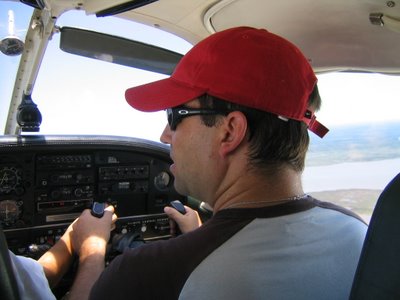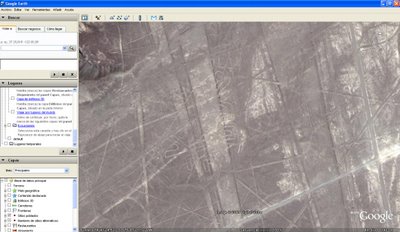Good day fellow travelers. As I am sure some of you already aware, a new bridge is about to be opened near the base of
Machu Picchu. I thought I’d address this issue in my latest blog entry and ask what exactly it is this bridge will do for the region, what implications the bridge has for
Peru’s most sacred site, and what can we do about it?
Sometime back I heard that the mayor (now former mayor) of Santa Teresa – a small town less than a stone’s throw away from Machu Picchu – was planning to have a bridge built crossing the Vilcanota River. This bridge will be inaugurated in February. As I began to wonder about the implications this bridge might have on Machu Picchu and tourism in the region, a storm of arguments arose in the international media regarding the issue. On the one hand people argue that the bridge has the potential of so over-crowding Machu Picchu with tourists that both the hallowed ruins and regional ecology will be destroyed; on the other hand people are arguing that the residents of Santa Teresa – long cut off from the rest of the world – deserve a bridge with which they can more easily reach Cusco and make a living. In Peru the dispute over the bridge is very heated, and so with this blog entry I thought I’d attempt to tackle the problem in order to hopefully shed more light on it for those of you who are interested.

Traditionally there has only been one way to reach Machu Picchu, that being by taking the train from Cusco to Aguas Calientes, the town closest to Machu Picchu. In reality there is another way – through Santa Teresa – but in order to get there one has to travel over a network of very nasty roads. The 20 or so hour drive from Cusco to Santa Teresa leads through jungle swamps and over cliff faces with drops so unimaginably high that sky diving aerialists would shudder in fear. This route has been the only road the residents of Santa Teresa have been able to use to take their produce to Cusco. One does however need to take into account the wider repercussions the bridge could have on the ruins, the region, and even the country as a whole.

The base concern presented against building the bridge is that it will bring in such an influx of tourists that both the ruins and ecology of the region could be badly damaged. Remember that one of the major sources of Peruvian income is tourism, and a that the major source of Peruvian tourism is Machu Picchu.
The price of crossing this bridge on a bus from Cusco is estimated to cost somewhere in the region of four US dollars. Anyone who has ever been to Machu Picchu will know how much of a price cut this is on the train ticket. The amount of people traveling to the ruins is estimated to shoot through the roof with figures this low. The development of a new tourist infrastructure needed to cope with such an influx of tourists in the area would of course also be hugely detrimental for the ecology of the surrounding area, as well as for the ruins themselves. And so understandably many environmentalists/cultural activists are calling for the bridge to be closed – perhaps even destroyed.
Machu Picchu currently receives over 4000 tourists a day, that’s just shy of 1,500 000 tourists a year. It is hardly a wonder that UNESCO is currently in the process of changing their classification of Machu Picchu to an Endangered World Heritage site. The UN group is in fact at the moment engaged in talks with the government that would have them drop the number of tourists permitted to enter the site from 4,000 to 2,500. If anything this shows how dire the problem already is. With the new bridge however, the number of visitors could likely so overly surpass the current levels of tourists visiting Machu Picchu that the ruins may quite likely disappear, making the many efforts that people have made towards their preservation futile.

Another argument against the construction of the bridge is that it provides a much shorter route for local Coca Farmers to transport both coca paste and cocaine to urban areas, from where it is transported and shipped overseas. Still, some people argue that a more accessible road to open up this region would hardly make the transport of drugs easier, but would more likely make it harder as police and military would be able to make their presence more felt in the area.
And so this is how it stands. On the one hand we have a national treasure that is under threat, and on the other we have a group of people who are effectively being denied the right to an easier way of life. It’s a tough argument and both sides have their points. I would of course choose to preserve Machu Picchu at all costs, but there’s also the real need of a community trying to develop itself in order to better the lifestyle of its people. So I guess a compromise between the two arguments would be the best result of this dilemma – a compromise I have heard a few people talking about already.
One feasible solution would be to open the bridge and disallow tourists the right to cross it. This would benefit both the people of Santa Teresa and the majestic ruins themselves. This approach would however also deny those who would be otherwise unable to afford getting to the ruins a chance to see them.
Obviously losing Machu Picchu is a nightmare Peru will never actually allow – the country relies too much upon it economically. What is worrying however, is how long it will take to put the effective wheels into place that will advert this tragedy. If it takes too long, how much of an impact will have already been made?
It is a complex situation with many differing arguments and points of view. Please take my points of view and opinions as they are – a means with which to more clearly envision the depth of what could be a difficult situation for Peruvians and travelers alike. For those interested in finding out more I suggest you look into the following websites:
I hope that some of you may have found this helpful and interesting. If anyone out there has a point of view regarding the situation please feel free to post a comment and we can further discuss it.
To all you travelers out there – Keep on discovering!
Bart
www.cat-travel.com
 On my last trip to Puno and
On my last trip to Puno and 





























